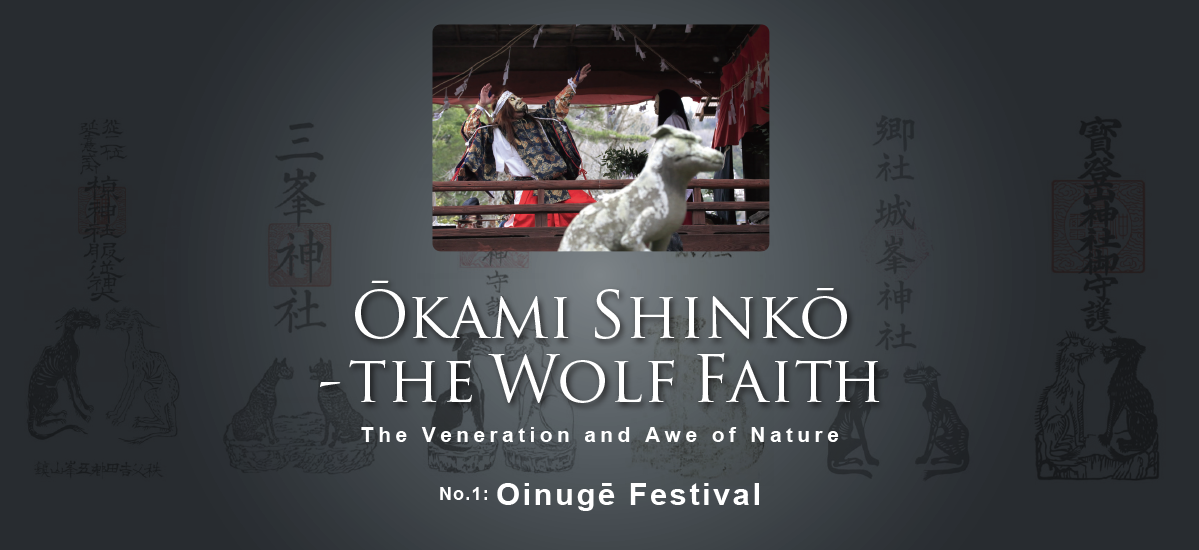
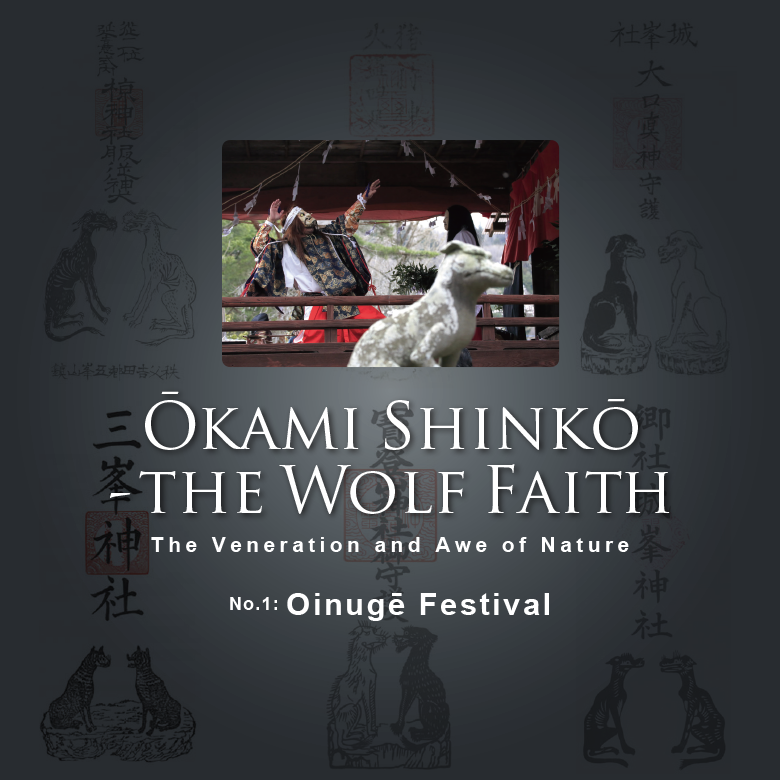
Across Japan, there remain regions where wolves are revered as go-kenzoku, or envoys of the gods. In this series of articles, we trace the path of the Ōkami Shinkō, the Wolf Faith.
Text and Photos : 青柳健二 Kenji Aoyagi / English Version : Judy Evans
Keyword : Ōkami Shinkō / Japanese Wolf Faith / Oinu-gē
Muku Shrine, in the Yoshida area south of Chichibu’s Mt Jōmine, is a twenty minute car journey from the centre of Chichibu City, in Saitama Prefecture. The shrine is renowned for its annual Ryūsei Matsuri, where different neighbourhoods vie to create dazzling ryūsei (rockets made of bamboo), competing to have the gaudiest decorations and the highest-flying rocket. The festival, which is said to have begun during the Edo Period (1603 – 1868), has much in common with similar festivals held by Tai ethnic groups in Thailand, Laos and Southern China. The rockets as they soar into the air are said to resemble Nāga, the water-dwelling serpent dragon who controls the rain. The ritual is performed in the hope of ensuring just the right amount of rain that year, not too much and not too little.
But I found out that Muku Shrine has another special festival, the Oinu-gē, which is held every year in early April. My curiosity was sparked when I realised that Oinu-gē, a regional pronunciation of the word Oinu-gae, literally means “exchanging dogs”.
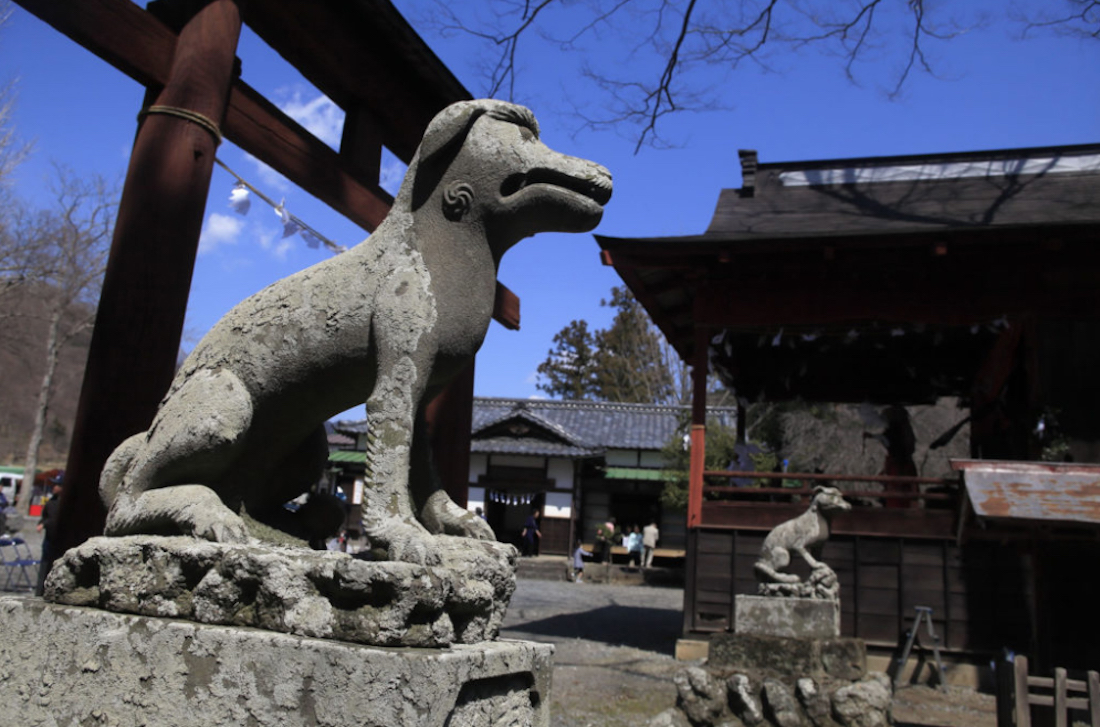
Hearing that the festival is where you exchange your old dog for a new one conjured up images of some kind of canine swap meet! However, the dogs in question are, in fact, the extinct Nihon ōkami, or Japanese wolf. Curiouser and curiouser!
While wolves were considered in many countries as dangerous animals that killed livestock, the Japanese wolf, which lived mainly in Honshū, was relatively small. Livestock farming was not widely practised in Japan, and apart from in the horse-breeding region of Tōhoku, wolves were looked upon as a beneficial animal that protected village fields from crop-raiding wildlife such as deer and wild boar. The wolf faith has its roots in a reverence for the gods that protected farms.
Although revered, the wolf was also a fearsome wild animal, as evidenced by records of injuries and damage inflicted by wolves in the past. But perhaps the paradox of an animal that was both protector and apex predator makes it all the more mystical and worthy of veneration.
The wolf itself is not considered a god in its own right, but rather the envoy, an intermediary of sorts, of the mountain gods. Wolves are revered as kenzoku, animals that receive the spiritual powers of the gods and do their bidding. In the Kantō and Kōshin regions, these supernatural canines are known as Oinu-sama, and in Tōhoku, simply as Oinu. (Inu is the Japanese word for dog.)
Oinu-sama ofuda (talismans) issued by the shrines harness the same spiritual power as the wolf. However, this power wanes after a year and the talismans have to be exchanged for new ones to ensure the continued protection of the wolf. The ceremonies where old ofuda are exchanged for new have various names, including Go-kenzoku Haishaku and Oinu-gē – “exchanging dogs”.
Incidentally, instead of komainu (lion-dog) statues at the shrine entrance, the stone guardians at Muku Shrine are wolves.
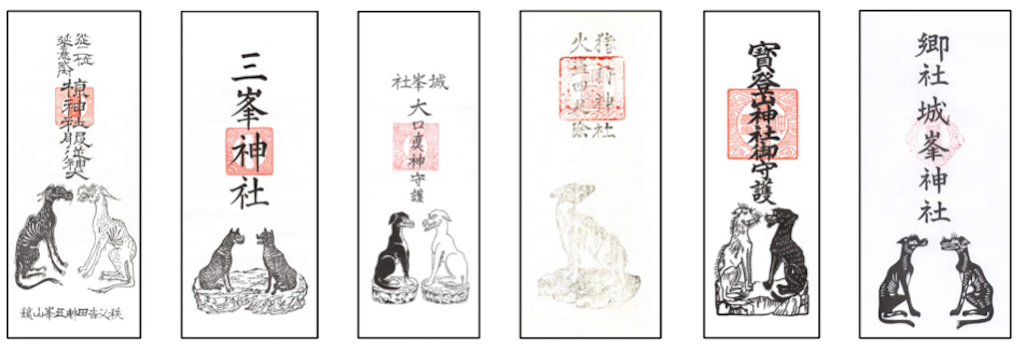
A significant number of shrines dedicated to the wolf are found in the Chichibu area, making the region one of Japan’s main centres for the Ōkami Shinkō (Wolf Faith). In addition to Muku Shrine, wolf talismans are exchanged at around ten other shrines in the area, including Mitsumine Shrine, Jōmine Shrine, Igari Shrine and Hodosan Shrine. (The custom began at Mitsumine Shrine, which I’ll explore in the next article.)
Part of the charm of the ofuda is the simplicity of the wolf images they bear. Some talismans feature a single, lone wolf, while others depict pairs of wolves facing each other, sometimes both black, sometimes one black and one white. One of the more striking images is that of a pair of emaciated wolves with their ribs sticking out. When depicted in pairs, one wolf will have its mouth open, uttering the syllable “a”, while the other, its mouth closed, utters the syllable “um”. The first and last letters of the Sanskrit alphabet, these two syllables symbolise the beginning and end of all things.
I saw woodblock-print ofuda on display at one of the regularly-held festivals at Jōmine Shrine in Kamikawa-machi. Prints made from particularly old woodblocks with parts of the lines worn away conveyed a real sense of antiquity. Some of these ofuda seem like pieces of art. However, in recent years some shrines have had their talismans printed by commercial printing companies.
An elderly shrine parishioner manning the reception table at Muku Shrine gave me some advice on how to get the best out of my talisman. “You can hang your ofuda in the entrance of your house, or place it on the family altar. Some farmers put them on sticks and stand them in the fields, or cut them into tiny pieces and scatter them across their fields.”
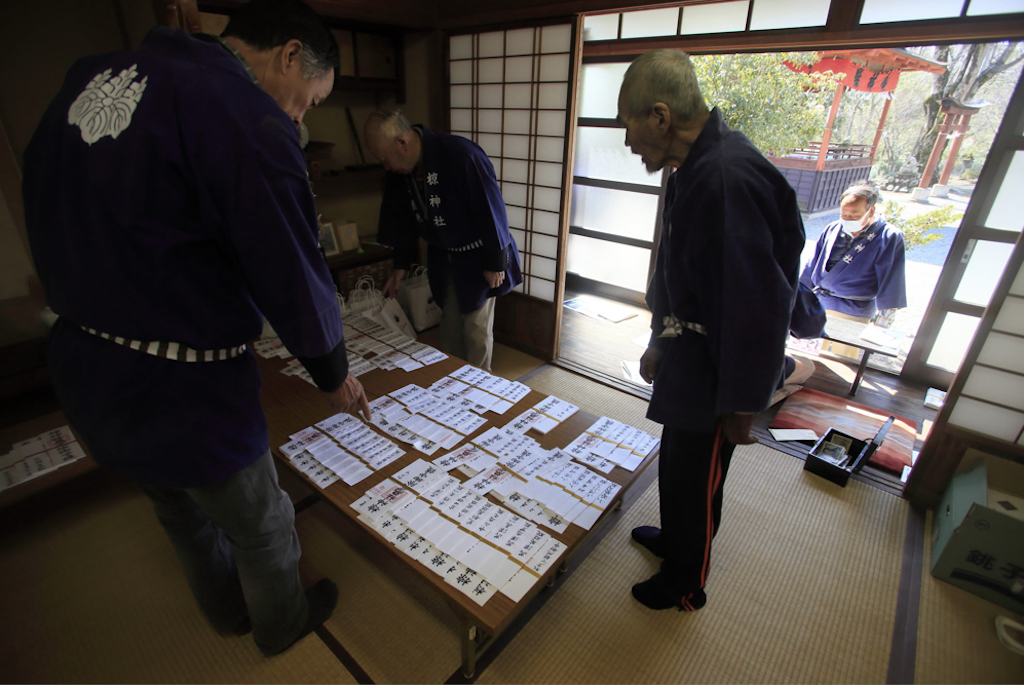
On the day I was there, a portable mikoshi shrine was being paraded around the town and a kagura performance was in full swing at the shrine, under the watchful eye of one of the shrine’s guardian wolf statues. In the past, as many as 20,000 people would converge on Muku Shrine from all over Chichibu for Oinu-gē, but many families are now thought to have abandoned the custom as the older generations pass on.
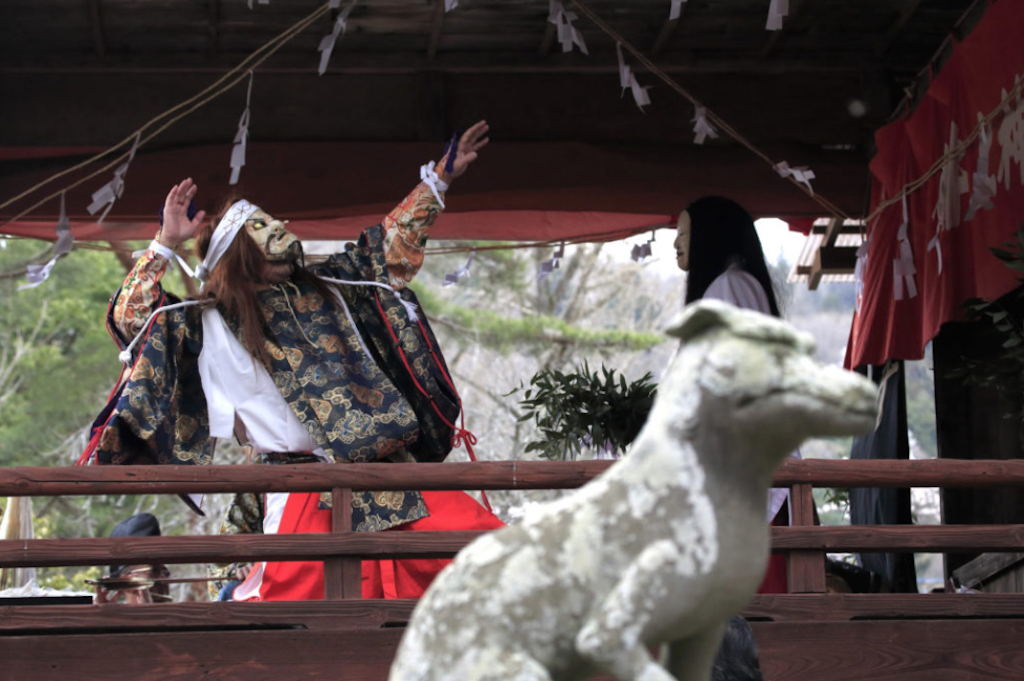
Muku Shrine
Shimo Yoshida 7377, Chichibu City, Saitama Prefecture.
Phone: 0494-77-1293








